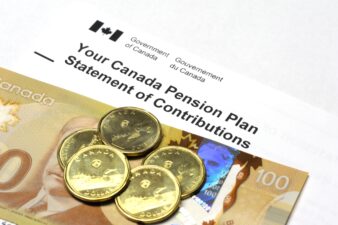Like billionaire investor Warren Buffett, I’ve avoided airlines throughout my investing life. I’ve missed a few great opportunities over the years — like the time immediately after September 11, as well as during the financial crisis of 2008-09 — but I was pretty content with missing those opportunities. For every great airline during those years, there was another that was forced to enter bankruptcy protection. There were a lot of land mines hidden among the opportunities.
Although I’ve been a long-term bear about the sector, I have to admit things are looking pretty good for the airlines right now. Most importantly, the decline in oil is a huge potential boost to the sector’s collective bottom line. The North American economy is humming along nicely, with the only notable exception being energy. And finally, international travel is increasingly important to young adults. In today’s social media world, exotic trips are the new status symbol.
Airlines have also learned from their mistakes. Price wars are largely a thing of the past, just look at domestic prices offered by Air Canada (TSX:AC) and Westjet Airlines Inc (TSX:WJA). Both companies are keeping fares up, not bothering to pass fuel savings to customers. Both airlines are also charging $25 for the first checked bag, another dependable source of revenue.
Both of Canada’s main airlines are trading at reasonable valuations too. Westjet’s price-to-earnings ratio is just over 14, while Air Canada is trading at less than 4 times its projected 2015 earnings of $3.21 per share. Load factors also remain good, Westjet recently reported a load factor of 80.5%, while Air Canada’s comparable number was 77.7%. Both load factors are near record highs.
While things aren’t looking so bad for Canada’s two major airlines, there’s another Canadian airline that I think represents a better opportunity, Transat AT Inc (TSX:TRZ.B).
Why Air Transat?
Unlike its two competitors, Transat doesn’t even bother with domestic routes. Canadians likely know Air Transat for its routes to the Caribbean and Europe, using its leased fleet of Boeing and Airbus planes. It also flies to a few U.S. destinations, as well as some Central and South American destinations.
Transat shares have been weak over the last year. After hitting a high of $11 back in March, the company’s shares have fallen all the way down to $7.50 each, which is the lowest level since 2013. The reasons for the decline include the slumping Canadian dollar — a problem since so many of its costs are in other currencies — as well as losing money on hedging fuel prices.
Even through all those headwinds, Transat is still profitable. After losing money in the first two quarters, it turned in quarterly profits of $0.66 and $0.76 over the last two quarters of 2014, leading to an annual profit of $0.56 per share. That’s a current price-to-earnings ratio of 13.3, which is pretty cheap. Normally I check the forward earnings estimates, but I couldn’t find any posted online. Maybe that’s one of the reasons why the company is so cheap.
Where Transat really shines is its balance sheet. The company has a market cap of just $290 million, but is sitting on $310 million in cash. It reports a debt-free balance sheet, but that’s not exactly true since it has committed to leasing its fleet. Still, even including the lease commitments, Transat still trades at a substantial discount to its book value, which is $12.47 per share.
Transat’s moat is its European business. It offers non-stop flights to more European cities than Air Canada, out of markets like Calgary, St. John’s, and Halifax. Air Canada does compete on many routes, but it mostly does so via hubs in Toronto and Montreal. Getting a non-stop flight to Europe is a plus for folks in some smaller markets. And even though its competitors offer all-inclusive packages to sunny destinations, Transat has a dominant position in that market.
But mostly, Transat is a cheap stock. It trades at a great price-to-earnings ratio, and is substantially under book value. If you’re looking to invest in an airline, I’d recommend it over its main two competitors.







